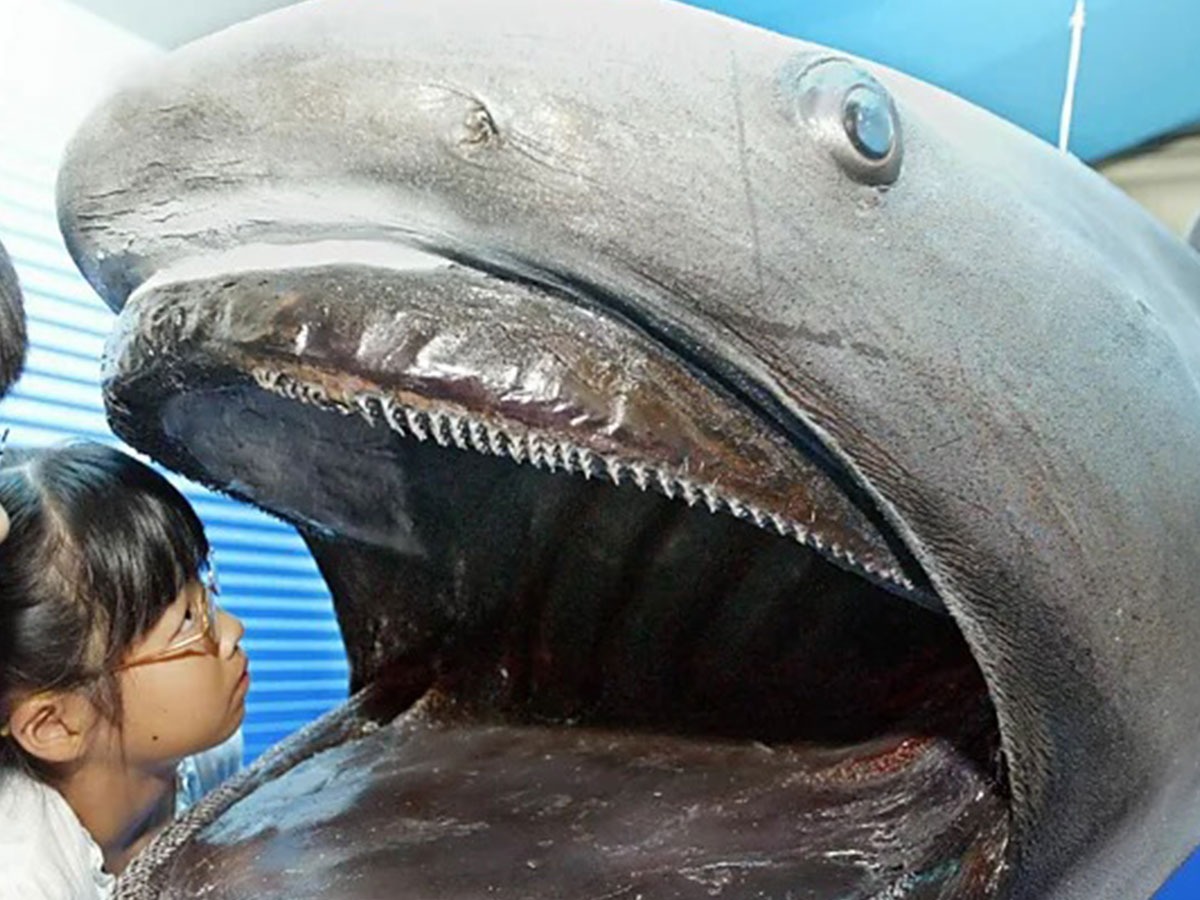
The New Shark Species Emerging from the Depths
As humanity explores deeper into the ocean, more and more new shark species are being discovered.
It all began with an egg in 1989 when Australian scientists found a peculiar “mermaid’s purse” – a leathery egg case that certain sharks lay instead of giving birth to live young. This particular egg case had an unusual feature: prominent ridges along its top. Found off the Rowley Shoals, a group of atolls on the edge of the continental shelf in the East Timor Sea, these egg cases posed more questions than answers. What creature had laid them? Where did it live? Why did the egg case look so distinctive?
It would take more than 30 years before scientists would solve even the most basic of these mysteries, and in doing so, discover a completely new species of shark.
Even now, well into the 21st century, new species of sharks – the ocean’s most iconic predators – are still being identified. Back in the mid-1980s, scientists had documented around 360 species of sharks, ranging from the small dwarf lantern shark at 20 cm (8 inches) to the enormous whale shark, the largest fish in the ocean. Fast forward 40 years, and that number has surged by nearly 40%. Over 500 shark species are now known, and the discovery of new species shows no signs of slowing.

As recently as September 2024, scientists identified a new species of ghost shark – a primitive cartilaginous fish related to sharks – thanks to a specimen recovered from the deep waters off the coast of New Zealand.
This surge in shark discoveries rivals the golden age of exploration. It’s not just advanced technology revealing these species – much of the detective work takes place in museum archives, where forgotten specimens hold the key to new findings. Take, for instance, the mystery surrounding the ridged shark egg cases.
Will White, senior curator at the Australian National Fish Collection at the Commonwealth Scientific and Industrial Research Organisation (CSIRO) in Hobart, Australia, was part of the team that solved the mystery. After the egg cases were found in the Rowley Shoals survey, they were archived, and for years no further investigation was made. In 2011, Brett Human, a volunteer researcher at the Western Australian Museum, came across one of these egg cases. He linked it to others found off the coast of Australia and deduced that it likely belonged to a member of the Catshark family. Still, the exact species remained unknown.
“He made a very good effort in narrowing it down,” says White, “better than most would have.” Even so, it wasn’t until White and colleague Helen O’Neill started reviewing old cases that the mystery began to unravel.
As White examined collection data, he realized that the egg cases were from the same survey and depth – between 410 and 504 meters (1,345 to 1,640 feet) – where a previously unidentified catshark had been caught. When White dissected the preserved shark specimen, he found a developing embryo inside an egg case with the same distinctive ridges. This detective work revealed a completely new shark species, solving a puzzle that had baffled scientists for over 30 years.

The sinister-looking demon catshark, now known as Apristurus ovicorrugatus, was unveiled in the Journal of Fish Biology in April 2023. This new species likely dwells around 700 meters (2,297 feet) beneath the ocean’s surface, laying its egg cases on coral in the pitch-black depths. White notes that identifying species in this group is especially difficult because of the subtle differences between them.
“We’re getting down into looking at aspects of the digestive tract and liver shape,” White explains. “You know you’re desperate when you’re analyzing features like that.”
But the demon catshark is far from the only discovery. Recently, White helped identify another new species, this time a horn shark. Typically, horn sharks inhabit shallow waters, resting on the seafloor among kelp forests. However, this new species was discovered in much deeper waters off the coast of Western Australia, at depths of 150 meters (500 feet).
This isn’t the end of discoveries either. White and his team are already investigating another new species from the same genus found off Queensland, which also lays ridged egg cases but with slightly different features.
Australia isn’t the only hotspot for these deep-sea discoveries. Across the Indian Ocean, German shark scientist Simon Weigmann of the Elasmobranch Research Laboratory in Hamburg recently discovered two new species of saw sharks off the southeastern coast of Africa. These bizarre creatures are armed with long, toothed snouts called rostrums. With the help of Ruth Leeney from the Anderson Cabot Centre for Ocean Life, Weigmann identified these new species after seeing photographs of saw shark rostra caught by Madagascan fishermen.
What made these saw sharks particularly interesting was their unique features, such as having six-gill slits instead of the usual five, and barbels – fleshy tendrils used for sensing prey – located much closer to the tip of their rostrum than in other species. Weigmann then travelled to the Natural History Museum in London, where he compared these newly discovered specimens to a saw shark caught more than a century ago.
To his surprise, these new sharks weren’t just isolated cases. Andrew Temple, a researcher at King Abdullah University of Science and Technology in Saudi Arabia, discovered yet another species of saw shark off the coast of Zanzibar, adding to the growing list of new sharks being identified from the deep.
Saw sharks are elusive, and relatively few species have been documented. The recent discoveries highlight the importance of local fishermen in providing crucial samples. “Without them, we might never have noticed,” says Weigmann.
Many of these new sharks, including saw sharks live far below the surface, sometimes as deep as 300 meters (1,000 feet). However, some have been found in shallower waters, suggesting these creatures may move vertically at night, coming closer to the surface to feed. This makes them particularly vulnerable to fishing practices and emphasizes the importance of continued conservation efforts.

The significance of these discoveries goes beyond expanding the species catalogue . Weigmann uses the example of the blue skate, a ray whose population was severely depleted by commercial fishing. Only after its decline did scientists realize the population consisted of two distinct species, complicating conservation efforts. “This is why taxonomic research and describing new species are so important,” he explains.
There may be more sharks waiting to be discovered in the deep ocean. Not all will be small like the demon catshark. In 2021, scientists identified three new species of deep-sea sharks that glow in the dark, one of which grows up to 1.8 meters (5.9 feet) long.
It was only 50 years ago that the megamouth shark, one of the largest shark species, was discovered after becoming entangled in a US Navy ship’s anchor near Hawaii. Since then, scientists have continued to push the boundaries of marine exploration, and there’s no telling what else might be hiding in the vast, unexplored depths of the oceans.



